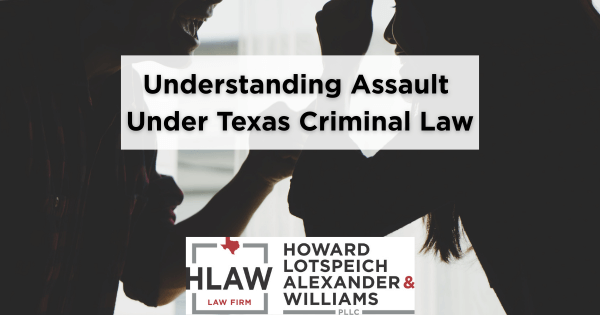

An accusation of assault in Texas can have serious and life-altering consequences. Our latest blog post breaks down the different degrees of assault charges, potential penalties, and possible legal defenses. Learn more about protecting your rights.
When people hear the phrase “assault and battery,” they often envision two distinct criminal offenses: one encompassing threats of harm and the other involving actual physical violence. However, it’s crucial to understand that under Texas law, the legal landscape is structured differently. The term “battery” is not used to define a separate criminal offense. Instead, both the act of threatening harm and/or the act of causing physical harm are typically consolidated under the broader legal definition of assault. This fundamental difference is key to comprehending how such charges are prosecuted in the state.
This post aims to provide a comprehensive breakdown of what constitutes assault under the Texas Penal Code, delve into the varying degrees of severity and their classifications, and outline the potential penalties that individuals accused of these offenses may face. We will also explore related offenses like aggravated assault and common legal defenses.
Defining Assault in Texas: A Three-Pronged Approach
The Texas Penal Code § 22.01 provides a specific and multifaceted definition of assault. A person commits assault if they engage in any of the following actions:
- Causing Bodily Injury: Intentionally, knowingly, or recklessly causing bodily injury to another person. This includes a spouse, and the term “recklessly” implies a conscious disregard of a substantial and unjustifiable risk that the injury will occur. Bodily injury itself is defined broadly as physical pain, illness, or any impairment of physical condition. This means even an act causing temporary pain, without visible marks, could qualify.
- Threatening Imminent Bodily Injury: Intentionally or knowingly threatening another person (including a spouse) with imminent bodily injury. The key here is the “imminent” nature of the threat; it must be a threat of harm that is about to happen. The threat can be conveyed through words, gestures, or a combination of both.
- Causing Offensive or Provocative Physical Contact: Intentionally or knowingly causing physical contact with another person when they know—or should reasonably believe—that the other person will regard the contact as offensive or provocative. This prong does not require any injury. Examples could include an unwanted touch, a shove that doesn’t cause pain but is clearly offensive, or spitting on someone.
Because this statutory definition of assault encompasses both verbal or gestural threats (with no physical harm necessarily resulting) and actual physical contact that might or might not cause bodily injury, Texas law effectively subsumes what many other jurisdictions would categorize separately as “battery” into its singular assault statute.
Degrees of Assault and Their Corresponding Penalties: A Spectrum of Severity
Assault charges in Texas are not one-size-fits-all. The severity of the charge and the potential penalties depend heavily on the specific circumstances of the incident, the harm caused, the identity of the victim, and the defendant’s prior criminal history.
- A. Class C Misdemeanor Assault
- What It Is: This is the lowest level of assault. It typically involves situations where an individual threatens someone with imminent bodily injury but does not actually cause any physical harm, or where they cause physical contact that is deemed offensive or provocative but does not result in bodily injury. Examples could include a verbal threat of immediate harm or an unwelcome, offensive touch.
- Penalties: A Class C misdemeanor is punishable by a fine of up to $500. While there is no jail time associated with a Class C misdemeanor conviction itself, failure to pay the fine or adhere to court orders can lead to further legal complications.
- B. Class A Misdemeanor Assault
- What It Is: This is a more serious charge and is often filed when the assault results in actual bodily injury to another person, and the circumstances do not elevate it to a felony. As previously noted, bodily injury is defined as physical pain, illness, or any impairment of physical condition. This could range from a bruise or scratch to more significant, but not life-threatening, injuries.
- Penalties: A Class A misdemeanor carries significantly steeper penalties, including potential confinement in county jail for up to one year and/or a fine of up to $4,000.
- C. Enhanced Misdemeanors and Felony Assault: When Circumstances Escalate the Charge The gravity of an assault charge can be substantially increased, elevating it from a lower-level misdemeanor to a higher-level misdemeanor or even a felony, based on several critical factors. These factors often relate to the identity of the victim, the defendant’s prior criminal record, or the specific nature and context of the incident.
- Assault Against a Public Servant:
- If the victim of the assault is a public servant (such as a police officer, firefighter, emergency medical services (EMS) personnel, correctional officer, or even a process server) who is lawfully discharging an official duty, and the defendant knows the person is a public servant, the charge can be enhanced. An assault that might otherwise be a Class A misdemeanor can become a third-degree felony if it results in bodily injury to a public servant.
- Penalties for a third-degree felony include imprisonment for 2 to 10 years and a fine of up to $10,000.
- Assault Involving Family Violence:
- Texas law takes domestic violence very seriously. If an assault involves a family member, household member, or someone with whom the defendant has or had a dating relationship, the penalties can be enhanced, especially with prior convictions.
- A first offense of assault causing bodily injury to a family member is typically a Class A misdemeanor. However, if the defendant has a previous conviction for an offense involving family violence (including assault against a family member, violation of a protective order, or stalking), a subsequent assault against a family member causing bodily injury can be charged as a third-degree felony.
- Furthermore, if the assault involves impeding the normal breathing or circulation of the blood of a family member or household member by applying pressure to the throat or neck (strangulation or choking) or by blocking the nose or mouth (suffocation), this act itself can elevate the charge. Such an offense can be a third-degree felony, or even a second-degree felony if the defendant has a previous conviction for a similar offense.
- Penalties for a second-degree felony range from 2 to 20 years in prison and a fine of up to $10,000.
- Assault Against Elderly& or Disabled Individuals:
- Assault committed against an elderly individual (defined as someone 65 years of age or older) or a disabled individual can also lead to enhanced charges. Depending on the severity of the injury and the defendant’s intent, these offenses can be prosecuted as felonies, reflecting the state’s interest in protecting vulnerable populations.
- Assault Against a Public Servant:
Aggravated Assault: A More Serious Offense
Distinct from simple assault, though closely related, is the offense of aggravated assault, as defined under Texas Penal Code § 22.02. This charge signifies a more severe form of assault. A person commits aggravated assault if, during the commission of an assault (as previously defined), they either:
- Cause serious bodily injury to another person (including their spouse). Serious bodily injury means bodily injury that creates a substantial risk of death or that causes death, serious permanent disfigurement, or protracted loss or impairment of the function of any bodily member or organ.
- Use or exhibit a deadly weapon during the commission of the assault. A deadly weapon can be a firearm or anything manifestly designed, made, or adapted for the purpose of inflicting death or serious bodily injury; or anything that in the manner of its use or intended use is capable of causing death or serious bodily injury.
- Penalties for Aggravated Assault:
- Generally, aggravated assault is classified as a second-degree felony. This carries a potential punishment of 2 to 20 years in prison and a fine of up to $10,000.
- Enhanced Aggravated Assault Charges:
- Similar to simple assault, aggravated assault charges can be further enhanced under specific circumstances. For instance, if the aggravated assault is committed against a public servant acting in their official capacity, or involves discharging a firearm from a motor vehicle towards a habitation, building, or vehicle and causing serious bodily injury, the charge can be elevated to a first-degree felony.
- A first-degree felony is punishable by imprisonment for 5 to 99 years, or life, and a fine of up to $10,000.
Exploring Possible Legal Defenses in Assault Cases
Facing an assault charge does not automatically mean conviction. The Texas legal system provides for due process and various defenses that, if applicable to the facts of the case, could lead to charges being reduced or dismissed. Common defenses in assault cases include:
- Self-Defense (Texas Penal Code Chapter 9): This is one of the most common defenses. A defendant may argue that their actions were justified because they reasonably believed that the force they used was immediately necessary to protect themselves from the other person’s use or attempted use of unlawful force. The amount of force used in self-defense must be reasonable in relation to the perceived threat.
- Defense of Others (Texas Penal Code Chapter 9): Similar to self-defense, a person is justified in using force to protect another individual if they reasonably believe the other person would be justified in using force to protect themselves, and the defendant reasonably believes their intervention is immediately necessary.
- Lack of Intent (Mens Rea): For most assault charges, the prosecution must prove a culpable mental state (intentionally, knowingly, or recklessly). If the contact or threat was purely accidental, and the defendant did not possess the requisite intent to cause harm, threaten, or make offensive contact, this could be a defense. For example, if bodily injury occurred due to an unforeseeable accident rather than intentional or reckless conduct.
- Mistaken Identity / Alibi: The defendant may argue they are not the person who committed the act in question or were wrongly identified by witnesses. An alibi defense would involve presenting evidence that the defendant was elsewhere when the alleged assault occurred.
- Consent: While not applicable in many assault scenarios (one cannot generally consent to serious bodily injury), in limited circumstances involving offensive contact or minor bodily injury (e.g., a contact sport), consent might be a factor.
It is absolutely critical to understand that the viability and success of these defenses are highly dependent on the specific, unique facts and circumstances of each individual case. Gathering evidence, witness testimony, and understanding the nuances of Texas self-defense laws (including the Castle Doctrine and Stand Your Ground principles, where applicable) are vital. Therefore, consulting with an experienced criminal defense attorney is paramount to thoroughly investigate the case, identify all possible defenses, and develop an effective and tailored defense strategy.
Consequences Beyond Criminal Penalties: The Ripple Effect of an Assault Conviction
A conviction for assault in Texas can have profound and lasting repercussions that extend far beyond court-imposed fines and potential imprisonment. These collateral consequences can significantly impact a person’s future:
- Permanent Criminal Record: An assault conviction, particularly a felony, creates a permanent criminal record that is accessible through background checks. This can severely limit opportunities for employment (especially in certain professions like teaching, healthcare, or law enforcement), housing (as landlords often run checks), and higher education.
- Issuance of Protective Orders: Victims of assault, especially in family violence cases, may seek and obtain protective orders (also known as restraining orders) against the defendant. These orders can legally prohibit the defendant from contacting the victim, going near their residence or workplace, or possessing a firearm, often for extended periods (e.g., two years, or sometimes longer). Violating a protective order is a separate criminal offense.
- Loss of Civil Rights: Certain convictions, predominantly felonies, can lead to the loss or restriction of fundamental civil rights. This includes the right to vote (until the sentence, including parole or probation, is fully discharged) and the right to possess firearms under both federal and state law.
- Immigration Consequences: For non-U.S. citizens, an assault conviction can have severe immigration consequences, potentially leading to deportation, denial of naturalization, or inability to re-enter the United States.
- Professional Licensing Issues: Many professions require state licenses (e.g., doctors, nurses, lawyers, teachers, real estate agents). An assault conviction can jeopardize an existing license or prevent an individual from obtaining one.
- Social Stigma: The social stigma associated with an assault conviction can affect personal relationships and standing in the community.
Conclusion: Navigating Assault Charges in Texas Requires Expertise
In summary, under Texas law, the traditional concept of “battery” is effectively integrated within the broader offense of “assault”. This legal framework makes it essential for anyone facing such allegations to understand precisely how Texas law defines and penalizes a wide array of threatening or harmful behaviors.
Whether an assault charge is classified as a misdemeanor or a felony, it invariably carries the potential for serious penalties, including substantial fines, incarceration (in county jail or state prison), and a host of long-term collateral consequences that can shape an individual’s future. Given the complexities of the law, the nuances of evidence, and the severity of potential outcomes, facing an assault charge alone is a daunting prospect.
Facing assault charges in Texas can be overwhelming, with serious consequences that can impact your life for years to come. Don’t navigate this complex legal challenge alone. If you or someone you know is confronting assault charges, the time to act is now. It is absolutely imperative to secure the counsel of a qualified and experienced criminal defense attorney immediately.
At Howard Lotspeich Alexander & Williams, PLLC (HLAW), our knowledgeable attorneys are ready to:
- Meticulously analyze the specific details of your case.
- Clearly explain your rights and the charges you face.
- Thoroughly explore all available defenses.
- Skillfully navigate the intricate Texas legal system on your behalf.
- Advocate zealously to protect your rights and fight for the best possible outcome.
Your future is too important to leave to chance. Contact Howard Lotspeich Alexander & Williams, PLLC (HLAW) today for a confidential consultation. Let our experience work for you.


 When you think about the Christmas season, you probably think about family time, presents, good food, and celebration. We think about those things too, but as criminal defense attorneys, we also think about the reasons that some of our clients get arrested during the holiday season. For this article, we took a look at the last 8 years of holiday season arrests (for clients that we represented) and compiled an (anecdotal) list of the top 5 reasons that folks get arrested during the Christmas/New Year’s season. Our goal is that this list will serve as a warning, so that your holiday season can be filled with the good stuff, rather than jail, bail, and calls to our office. Here goes:
When you think about the Christmas season, you probably think about family time, presents, good food, and celebration. We think about those things too, but as criminal defense attorneys, we also think about the reasons that some of our clients get arrested during the holiday season. For this article, we took a look at the last 8 years of holiday season arrests (for clients that we represented) and compiled an (anecdotal) list of the top 5 reasons that folks get arrested during the Christmas/New Year’s season. Our goal is that this list will serve as a warning, so that your holiday season can be filled with the good stuff, rather than jail, bail, and calls to our office. Here goes: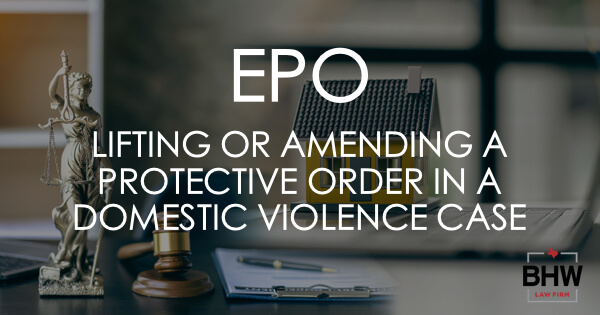

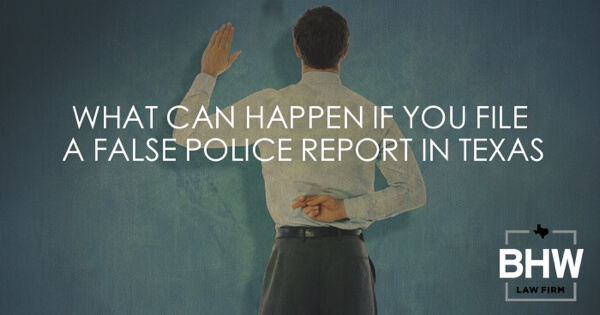
 As Fort Worth criminal defense attorneys, we are often asked by witnesses and victims what might happen if it comes to light that the story they told the police was not exactly true. We often see this in
As Fort Worth criminal defense attorneys, we are often asked by witnesses and victims what might happen if it comes to light that the story they told the police was not exactly true. We often see this in 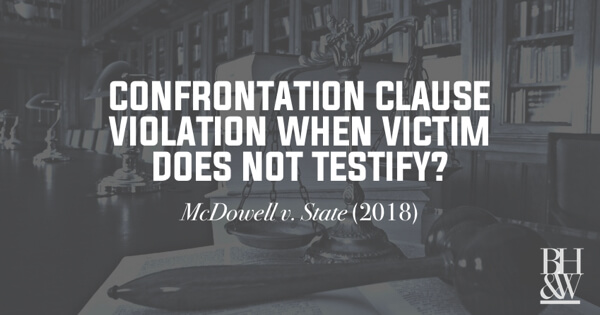
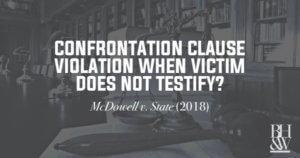 The Second Court of Appeals recently released a memorandum opinion, which reversed a defendant’s conviction due to a confrontation clause violation. The issue was whether the trial court (Criminal District Court Number 1, Tarrant County) erred in allowing an officer to testify about certain statements the alleged victim made regarding a prior assault allegation.
The Second Court of Appeals recently released a memorandum opinion, which reversed a defendant’s conviction due to a confrontation clause violation. The issue was whether the trial court (Criminal District Court Number 1, Tarrant County) erred in allowing an officer to testify about certain statements the alleged victim made regarding a prior assault allegation.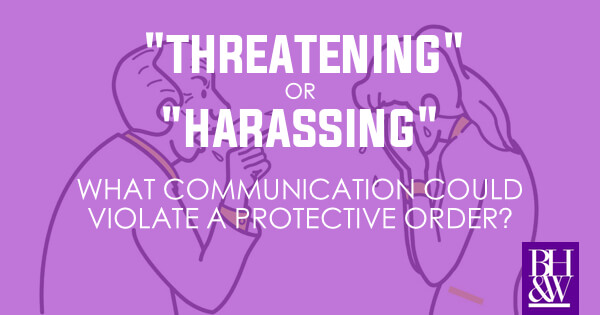
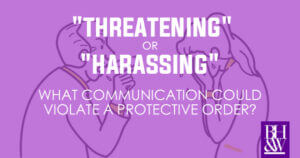 Family violence stories permeate the news, as domestic violence-related cases continue to fill both Texas criminal and family court dockets alike. The Texas Council On Family Violence reports that one in three Texans will experience domestic violence in their lifetimes. (
Family violence stories permeate the news, as domestic violence-related cases continue to fill both Texas criminal and family court dockets alike. The Texas Council On Family Violence reports that one in three Texans will experience domestic violence in their lifetimes. (
 The Lautenberg Amendment to the Gun Control Act enacted in the Fall of 1996 provides that those with a conviction for a misdemeanor crime of domestic violence cannot use, possess, or transport a firearm or ammunition.
The Lautenberg Amendment to the Gun Control Act enacted in the Fall of 1996 provides that those with a conviction for a misdemeanor crime of domestic violence cannot use, possess, or transport a firearm or ammunition.
 Voisine v. United States
Voisine v. United States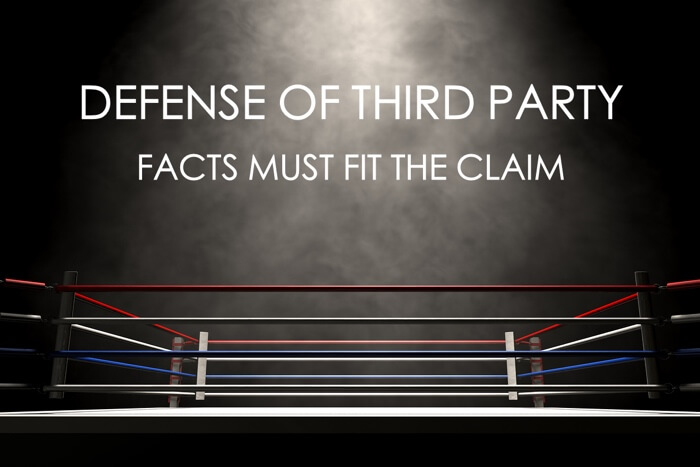
 This week, the Texas Court of Criminal Appeals released Henley v. State. In a 4-3 decision the divided court held that the defendant was not allowed to offer “defense of a third party” as a legal argument in his assault case, because it “was not material to, nor probative of, any fact that was of consequence to the determination of this action.”
This week, the Texas Court of Criminal Appeals released Henley v. State. In a 4-3 decision the divided court held that the defendant was not allowed to offer “defense of a third party” as a legal argument in his assault case, because it “was not material to, nor probative of, any fact that was of consequence to the determination of this action.”
 Most misdemeanor cases in Texas are charged by way of a document called an ”information.” An information does not have to be issued by a grand jury. The information can simply be prepared and reviewed by a District Attorney and then subsequently filed in a court with proper jurisdiction. Felony cases, on the other hand, must be indicted by a grand jury unless a defendant chooses to waive indictment and proceed without one.
Most misdemeanor cases in Texas are charged by way of a document called an ”information.” An information does not have to be issued by a grand jury. The information can simply be prepared and reviewed by a District Attorney and then subsequently filed in a court with proper jurisdiction. Felony cases, on the other hand, must be indicted by a grand jury unless a defendant chooses to waive indictment and proceed without one.





